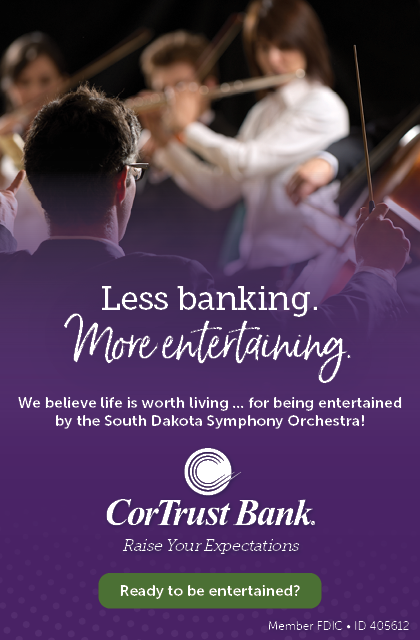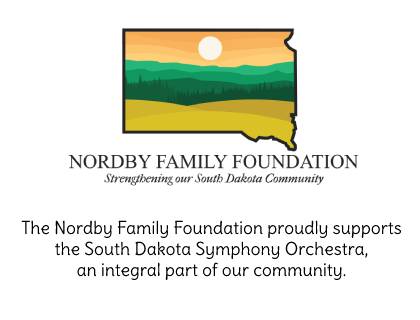Written by Anna Vorhes
BORN
May 29, 1897, Brno, Moravia (now Czech Republic)
DIED
November 29, 1957, Hollywood, California
INSTRUMENTATION
two flutes (one doubling piccolo), two oboes (one doubling English horn), two clarinets, bass clarinet, two bassoons, four horns, two trumpets, one trombone, timpani, percussion, celeste, harp, strings
DURATION
24 minutes
COMPOSED
Assembled may be a better word as each movement has at least one melody drawn directly from an earlier Korngold work. Actual work on the concerto began in 1945.
WORLD PREMIERE
St. Louis, February 14, 1947
SOMETHING INTERESTING TO LISTEN FOR: Film music in the 1930s and 1940s reflected the sweeping epics that were the fashion of the era. Where art music was experimenting with atonality (the sense of no home key) and dissonance along with rhythms that were unpredictable, film music used the language of the Romantic era symphonists: large orchestras, melodies with a wide pattern of building and receding, and rhythms to enhance the storytelling. Listen for how Korngold’s music would fit with Tchaikovsky, Brahms, and Wagner and their peers rather than the styles of Schoenberg, Stravinsky, and their peers in the twentieth century. The virtuosity required of the soloist is one of the remarkable things about this work.
NOTES
Most of us recognize that Wolfgang Amadeus Mozart was a child prodigy, able to do at an early age things other composers struggled to create well into their middle age. How many of us know that Erich Korngold was equally precocious? As a ten-year-old child, he met Gustav Mahler. Korngold shared his early cantata Gold, impressing the master. Mahler continued as a mentor. The young Korngold began exploring the developing languages of impressionism, expressionism, and neo-classicism. His serious music career was widely known and admired. He attracted the attention of Max Reinhardt, a German film and theater director and producer. Reinhardt was leaving Germany to resettle in California and invited Korngold to come with him to write music for the film version of A Midsummer Night’s Dream (1934) which Reinhardt was producing. The composer was intrigued by the chance to rework the music of Mendelssohn, one of his personal heroes. He decided to try writing film music.
At the same time as the invitation to California was extended to Korngold, Europe was beginning to feel the anti-Semitic rustlings of Hitler coming to power. As Korngold established a strong career as a film composer, he watched with growing alarm the situation in his homeland. He began using the money he earned to bring people he loved and knew from the danger of Hitler’s growing power. One of the people who benefited from these efforts was Korngold’s own father Julius. The elder Korngold was a powerful music critic in Vienna and had not been in favor of his son writing music for motion pictures. The son refused to see what he did with the drama of movies as being anything less valuable or artistic than the music he wrote for operas or symphonies. He refused to write the genres that would have been at home in his occupied Vienna, staying with the Hollywood world of movies as a protest to what Hitler was doing to his homeland.
The choice led to amazing success. Erich Korngold was the first to win an Academy Award for music for his film score for Anthony Adverse in 1936. He won another Academy Award for The Adventures of Robin Hood in 1938. When Hitler was defeated, Korngold slowly began returning to the world of concert music. Bronislaw Huberman was a famous violinist and friend of the Korngold family. He had long pestered the composer to write him a violin concerto. Finally in 1945 Korngold began working on the concerto. He assembled melodies from a number of his films and constructed a concerto he hoped would be worthy of Mendelssohn’s violin concerto, a long-admired composition.
Huberman was in the process of founding the Israeli Philharmonic. His playing was no longer the center of his professional career, and Korngold’s concerto proved to be too difficult for him to play as well as Huberman would have liked. In addition, Korngold’s neighbor was Jascha Heifetz. Heifetz consulted with the composer on how to make the violin part worthy of consideration as a concerto. The result is a work that engages the skills of the best violinists while entertaining audiences with Korngold’s lyricism. The composer was intrigued by Heifetz’s skills. He wrote, describing the premier,
“In spite of the demand for virtuosity in the finale, the work with its many melodic and lyric episodes was contemplated more for a Caruso than a Paganini. It is needless to say how delighted I am to have my concerto performed by Caruso and Paganini in one person: Jascha Heifetz.”
(For those not aware of the names, Caruso was an incredible opera singer. Paganini was perhaps the best violinist of the Romantic era, and Heifetz was a star in the world of Twentieth Century violinists.)
The concerto itself holds to the form expected by audiences for centuries. The first movement is at a bright tempo, and in sonata form. The first theme comes from the film Another Dawn. The film is about a love triangle in time of war, and the music is sufficiently dramatic. It is treated with less tension and more romance in the concerto. The violin is given precedence, and overall, the effect is much more enticing to the listener. The second theme is from the movie Juarez, a retelling of the story of Benito Juarez as he triumphs over Emperor Maximillian and Napoleon III. The theme Korngold repurposes for the concerto is a love theme written for Carlotta, Maximillian’s wife. The violin introduces the melody without any accompaniment. The theme provides a clear contrast to the more sweeping first theme.
The second movement is called Romanze and is based on music from Korngold’s first Academy Award winning score, Anthony Adverse. The theme is not quoted directly but provides the framework for a sense of ever rising emotion.
The third movement is a set of theme and variations drawing its theme from the music of The Prince and the Pauper, a retelling of the Mark Twain story. Korngold actually assembled a suite from the movie score, a lovely concert setting of all the important music. When he used the main theme for the violin concerto the solo part took on a much more intriguing and virtuosic format than the suite offered. Toward the end we hear the film roots of the melody, presented almost exactly as it opened the film. Korngold refers to his earlier work, then gives the violinist one more flourish to end the work.





